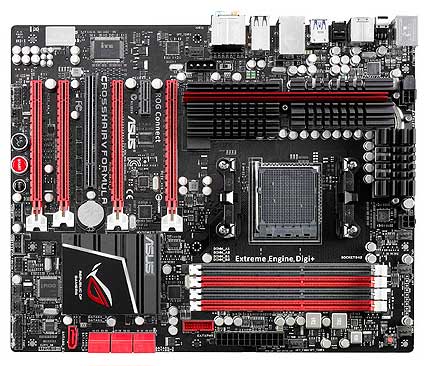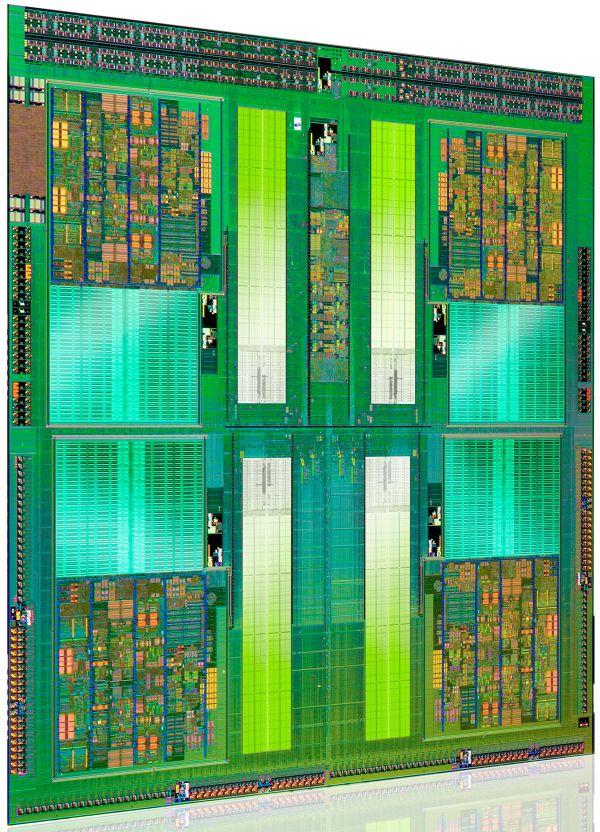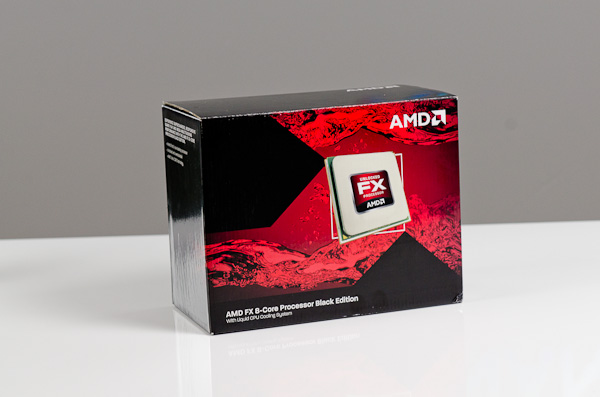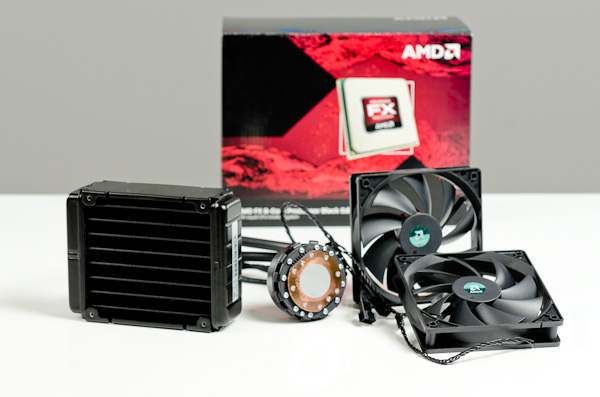The Bulldozer Review: AMD FX-8150 Tested
by Anand Lal Shimpi on October 12, 2011 1:27 AM ESTAMD has been trailing Intel in the x86 performance space for years now. Ever since the introduction of the first Core 2 processors in 2006, AMD hasn't been able to recover and return to the heyday of the Athlon 64 and Athlon 64 X2. Instead the company has remained relevant by driving costs down and competing largely in the sub-$200 microprocessor space. AMD's ability to hold on was largely due to its more-cores-for-less strategy. Thanks to aggressive pricing on its triple and hexa-core parts, for users who needed tons of cores, AMD has been delivering a lot of value over the past couple of years.
Recently however Intel has been able to drive its per-core performance up with Sandy Bridge, where it's becoming increasingly difficult to recommend AMD alternatives with higher core counts. The heavily threaded desktop niche is tough to sell to, particularly when you force users to take a significant hit on single threaded performance in order to achieve value there. For a while now AMD has needed a brand new architecture, something that could lead to dominance in heavily threaded workloads while addressing its deficiencies in lightly threaded consumer workloads. After much waiting, we get that new architecture today. Bulldozer is here.
It's branded the AMD FX processor and it's only available in a single die configuration. Measuring 315mm2 and weighing in at around 2 billion transistors (that's nearly GPU-sized fellas), Bulldozer isn't that much smaller than existing 45nm 6-core Phenom II designs despite being built on Global Foundries' 32nm SOI process. Both die area and transistor count are up significantly over Sandy Bridge, which on Intel's 32nm HKMG process is only 995M transistors with a die size of 216mm2. This is one big chip.
| CPU Specification Comparison | ||||||||
| CPU | Manufacturing Process | Cores | Transistor Count | Die Size | ||||
| AMD Bulldozer 8C | 32nm | 8 | 1.2B* | 315mm2 | ||||
| AMD Thuban 6C | 45nm | 6 | 904M | 346mm2 | ||||
| AMD Deneb 4C | 45nm | 4 | 758M | 258mm2 | ||||
| Intel Gulftown 6C | 32nm | 6 | 1.17B | 240mm2 | ||||
| Intel Nehalem/Bloomfield 4C | 45nm | 4 | 731M | 263mm2 | ||||
| Intel Sandy Bridge 4C | 32nm | 4 | 995M | 216mm2 | ||||
| Intel Lynnfield 4C | 45nm | 4 | 774M | 296mm2 | ||||
| Intel Clarkdale 2C | 32nm | 2 | 384M | 81mm2 | ||||
| Intel Sandy Bridge 2C (GT1) | 32nm | 2 | 504M | 131mm2 | ||||
| Intel Sandy Bridge 2C (GT2) | 32nm | 2 | 624M | 149mm2 | ||||
Update: AMD originally told us Bulldozer was a 2B transistor chip. It has since told us that the 8C Bulldozer is actually 1.2B transistors. The die size is still accurate at 315mm2.
Architecturally Bulldozer is a significant departure from anything we've ever seen before. We'll go into greater detail later on in this piece, but the building block in AMD's latest architecture is the Bulldozer module. Each module features two integer cores and a shared floating point core. FP hardware is larger and used less frequently in desktop (and server workloads), so AMD decided to share it between every two cores rather than offer a 1:1 ratio between int/fp cores on Bulldozer. AMD advertises Bulldozer based FX parts based on the number of integer cores. Thus a two module Bulldozer CPU, has four integer cores (and 2 FP cores) and is thus sold as a quad-core CPU. A four module Bulldozer part with eight integer cores is called an eight-core CPU. There are obvious implications from a performance standpoint, but we'll get to those shortly.
The FX Lineup
There are a total of 7 AMD FX CPUs that AMD is announcing today, although only four are slated for near-term availability.
| CPU Specification Comparison | |||||||||
| Processor | Cores | Clock Speed | Max Turbo | NB Clock | L2 Cache | TDP | Price | ||
| AMD FX-8150 | 8 | 3.6GHz | 4.2GHz | 2.2GHz | 8MB | 125W | $245 | ||
| AMD FX-8120 | 8 | 3.1GHz | 4.0GHz | 2.2GHz | 8MB | 95W/125W | $205 | ||
| AMD FX-8100* | 8 | 2.8GHz | 3.7GHz | 2GHz | 8MB | 95W | N/A | ||
| AMD FX-6100 | 6 | 3.3GHz | 3.9GHz | 2GHz | 6MB | 95W | $165 | ||
| AMD FX-4170* | 4 | 4.2GHz | 4.3GHz | 2.2GHz | 4MB | 125W | N/A | ||
| AMD FX-B4150* | 4 | 3.8GHz | 4GHz | 2.2GHz | 4MB | 95W | N/A | ||
| AMD FX-4100 | 4 | 3.6GHz | 3.8GHz | 2GHz | 4MB | 95W | $115 | ||
| AMD Phenom II X6 1100T | 6 | 3.2GHz | 3.6GHz | 2GHz | 3MB | 125W | $190 | ||
| AMD Phenom II X4 980 | 4 | 3.7GHz | N/A | 2GHz | 2MB | 125W | $170 | ||
The FX-8150, 8120, 6100 and 4100 are what's launching today. The first digit in AMD's FX model numbers indicates the number of cores with the 8150 and 8120 boasting eight, while the 6100 only has six active integer cores (three Bulldozer modules). The FX-4100 features four integer cores. L2 cache scales with core count (2MB per module), while the L3 cache size remains fixed at 8MB regardless of SKU.
North Bridge and L3 cache frequency alternate between 2.0GHz and 2.2GHz depending on the part. TDPs range between 95W and 125W as well, with the FX-8120 being offered in both 125W and 95W versions.
There's only a single Bulldozer die. The 6 and 4 core versions simply feature cores disabled on the die. AMD insists this time around, core unlocking won't be possible on these harvested parts.
The huge gap in clock speed between the 8120 and 8150 are troubling. Typically we see linear frequency graduations but the fact that there's a 16% difference between these two SKUs seems to point to process problems limiting yield at higher frequencies—at least for the 8-core version.
Outside of the quad-core and hex-core Bulldozer pats, the only other FX processor able to exceed the 3.3GHz clock speed of the Phenom II X6 1100T is the 8150. And if you include quad-core Phenom II parts in the mix, only two Bulldozer parts ship at a higher stock frequency than the Phenom II X4 980. Granted Turbo Core will help push frequencies even higher, but these low base frequencies are troubling. For an architecture that was designed to scale to clock speeds 30% higher than its predecessor, Bulldozer doesn't seem to be coming anywhere close.
The entire FX lineup ships unlocked, which allows for some easy overclocking as you'll see soon enough.
Motherboard Compatibility
AMD is certifying its FX processors for use on Socket-AM3+ motherboards. Owners of standard AM3 motherboards may be out of luck, although motherboard manufacturers can choose to certify their boards for use with Bulldozer if they wish to do so. From AMD's perspective however, only AM3+ motherboards with BIOS/UEFI support for Bulldozer are officially supported.
All existing AM2/AM2+/AM3/AM3+ heatsinks should work with the FX processor; they simply need to be rated for the TDP of the processor you're looking to cool.

For this review, AMD supplied us with ASUS' Crosshair V Formula AM3+ motherboard based on AMD's 990FX chipset.
AMD does offer six 6Gbps SATA ports on its 990FX chipset, a significant upgrade from the two 6Gbps ports on Intel's 6-series chipsets. Unbuffered ECC memory is also supported for those who desire the added security, once again a feature not supported on Intel's consumer grade 6-series chipsets.
Despite AMD's trend towards releasing APUs with integrated GPUs (thus requiring a new socket), AMD insists that the AM3+ platform will live to see one more processor generation before it's retired.
AMD's Liquid CPU Cooling System
Alongside its new FX processors AMD is introducing its first branded liquid cooling system manufactured by Asetek.
AMD's cooling system is similar to other offerings from companies like Antec and Corsair. The system is self contained, you never have to worry about adding any more liquid to it.
Attach the cooling module to your CPU socket via a simple bracket, and affix the radiator to your case and you're good to go. The radiator is cooled via two 120mm fans, also included in the box.
AMD doesn't have an exact idea on pricing or availability of its liquid cooling solution, but I'm told to expect it to be around $100 once available. My sample actually arrived less than 12 hours ago, so expect a follow up with performance analysis later this week.
The Roadmap
For the first time in far too long, AMD is actually being very forthcoming about its future plans. At a recent tech day about Bulldozer, AMD laid out its CPU core roadmap through 2014. The code names are below:
Piledriver you already know about, it's at the heart of Trinity, which is the 2—4 core APU due out in early 2012. Piledriver will increase CPU core performance by around 10—15% over Bulldozer, although it will initially appear in a lower performance segment. Remember that final generation of AM3+ CPU I mentioned earlier? I fully expect that to be a GPU-less Piledriver CPU due out sometime in 2012.
Steamroller will follow in 2013, again improving performance (at the core level) by around 10—15%. Excavator will do the same in 2014. AMD believes that these performance increases will be sufficient to keep up with Intel over time, however I'll let you be the judge of that once we get to the Bulldozer performance numbers.
The other thing to note about AMD's roadmap is it effectively puts the x86 business on an annual cadence, in line with what we've seen from the AMD GPU folks. Although AMD isn't talking about what process nodes to expect all of these cores at, it looks like AMD will finally have an answer to Intel's tick-tock release schedule moving forward.























430 Comments
View All Comments
Elric42 - Thursday, December 1, 2011 - link
I wanted to say one thing i dont have one but a friend of mine does and he showed me somthing my i5 cant do he was playing a game called crissis if thats how u spell it and running a video editting program at he same time well i cant do that with my i5 if i did the game would start to lag crissis takes alot out of your cpu bad programing even video cards have trouble with the game but bd seems to muti task better then what my i5 can do just wondering if its more for peeps who do alot of stuff at one time.ZyferXY - Monday, January 2, 2012 - link
Thanks for pointing that out because not so long ago i saw a video on amd's web site where they were showing of a amd Llano notebook vs a intel sandy bridge core i7 notebook they started the same benchmark on both notebooks and the intel was quite fast but as they open more and more programs at the same time the intel starts to drop in performance where the amd is running stable. So my suggestion would be to run all benchmark on the bulldozer and i7 2600k again but this time open about 10 or 20 other programs a the same time then u will truly see the bulldozer shine. I am not a amd fanboy my current build a intel Pentium G860 and i am very dissapointed in myself i shouldve gone with the amd q640 it was around the same price when i bought it. My next build will be a Amd FX4100. HAmakaira - Thursday, December 8, 2011 - link
Well I very excitedly bought a 8150 based system for number crunching as the performance/$ looked very good. I could buy a "quiet" system for Aus $ 1130 with SSD and only 8Gb RAM.I had previously purchased a Intel i7 2600K, but could never get it to overclock and run 64 bit Java app (Napoleon Spike from DUG) 24/7, it fell over after 6 hrs or 12 or 23 or 47, it always fell over despite water cooling.
Now the bulk of my work is done by Xeons in the rack, with a couple of dual 5680's systems doing the heavy lifting (2 x 6 core + hyperthreading looks like 24 CPU's to OS). These are good stable systems with 96Gb RAM, but high overall system cost.
I wanted a few cheap and moveable fast CPU's. Boy did the Bulldozer fail to deliver
More is Better measure in Bytes inversion throughput/minute
BD 8150 115-123k in 8/8 threads i.e. flat out
i7 2600 237-268k in 8/8 threads i.e. flat out
Xeon dual 5680 333-356k in 12/24 threads i.e.half loaded
i7-870 166k in 8/8 threads i.e flat out
Xeon Dual E5520 190k 12/16 threads
Xeon Dual 5430 132k 8/8 threads
The Bulldozer is the slowest and the newest....very poor performance. Eclipsed by Intel at similiar price point. I might as well replace the MB and CPU and go with i73960 or 3930...
wepexpert117 - Thursday, December 8, 2011 - link
I dunno if anyone noticed, but if u study the architectures carefully, then what AMD calls as a 'module' is comparable to a 'core' of Intels. Intels Hyperthreading allows two logical thread executions per core. But AMD's TruCore theory, only allows one thread per core. The Intel i5-2500K has 4 physical cores and 8 logical threads. Compared to that the most powerful of the AMD, the FX-8170, contains 4 modules which can execute 8 threads, with 2 cores per module, each core executing 1 thread. On the other hand the i7-2600K contains 6 physical cores and 12 logical threads. Hence by no chance, can the FX-8150, can match the capability of the 2600K, as the latter as 2 more cores to add to the power. As for the results of the benchmarking, it also agrees with the fact that the FX-8150 is comparable albeit a little less powerful than the i5-2500K, because of the architecture difference between Intels core and AMD's Bulldozer.If AMD ever brings out (according to them) a 12 core FX processor (Prob. FX-12XXX), then it would be really interesting to see how that matches with the i7-2600K. Altough the shared L2 cache architecture, is what may be detrimental to the performance of these processors.Jondenmark - Saturday, December 24, 2011 - link
Something is wrong. If I look at a die shot of Llano then the core is about 1½ times the size of the 1 MB L2 cache. If I look at a Bulldozer module, it is about 1½ times the 2 MB L2 cache. To me this indicates, that a Buldozer module is about 100% larger than a phenom II core which is far from the 12% more core size, which AMD has previously indicated was the cost of adding another core to form a module. The 12% was expected to allow AMD to add nearly double the core count on a given process node to convince the server market and give plenty of die space for the GPU on the Llano APU. Where am I wrong and what is right?8 core cpu - Friday, January 6, 2012 - link
This <a herf="http://8corecpu.com/">8 Core Cpu</a> is high spreed CPU. It is best than other CPU8 core cpu - Friday, January 6, 2012 - link
This 8 Core Cpu is high spreed CPU. It is best than other CPU. For more info please ....http://8corecpu.com/
Raven0628 - Saturday, January 14, 2012 - link
I beleive amd realy missed it shoot badly, but it is still the right social choice caus what will happen if intel get x86 monopol and they are still resonably priced and whene you have to live with it in every day life will you realy notice the diferance in perfomance. Unless you realy to go for all the top of the line in every part of your system you will got for the top of intel i7.But i'v never did and alway ended up with reliable good perfomance amd sys for less than 800$ counting with the power supply i had to replace. this year. my point unless you want a death machine go for amd and you will feel better with your self ;).
PS. sry for the terible english.
Ernst0 - Sunday, February 5, 2012 - link
Hey guys.There is no doubt that whatever critiques have been posted are valid but I skimmed a few pages and saw no "Consumer" comments.
I have purchased an 8150 with a AMD3+ motherboard and will be putting the unit together.
In my days since the Z80 and 48k this represents the nicest cpu ever for me.
That it was affordable and that I will have 8 cores to task with my hobby programming such as trying to factor RSA-numbers or the ilk the AMD 8=core is a dream system for the price.
I picked up case, mother board power supply, 1.5 TB drive DVD, 1 gb video, 16 gb ram, 28 inch monitor, wall mount for monitor so I can have two 28's with one the long way for source code and perhaps something else.. Anyway $1200 is the cost.
Now this is my first bare-bones experience too so all in all it is exciting to get such a dream machine and I am happy to step forward and support AMD
I don't know what awaits when the memory arrives and I boot up but it feels like Starship already and I have vowed to learn OpenMP under GCC to advance into multi-core programming.
So perhaps there will be issues. perhaps this is not all that nor is it wat will come but from where I am at I am still on the AMD home team and my money is flowing in the economy.
I went from trs 80 to Amiga then to twin AMD single core chips on one Motherboard, Moved to the early quad cores dreaming of dual quad cores when a system with 8 cores of that day would have cost $4900 and now picked up a system that as a boy in 1973 I would have considered Alien-ufo technology for about what I paid for dual single core chips just a few years ago.
So BullDozer can't be all that bad. The price is good! I will see how she runs. I often peg cores at 100% for days when searching for RSA factors.. Looks like I get more bang for the same bucks this time and I am all for that.
Thank you AMD for such a wonderful cpu. I plan to make use and thanks to the motherboard I can watch out for heat issues much easier than ever,
Not to mention it looks like the sound system is way advanced over the last computer as well.
So from a consumer / hobby programmer point of view this is very cool indeed.
Ernst
mumbles - Sunday, February 12, 2012 - link
Thank you for being the first to actually contribute some real world response to this architecture. So many trolls on this thread that are intel fanboys.Also, if your using xen with this thing, I would be interested in seeing some feedback on how multiple guests(like more than 4) act when trying to fight for floating point processor time. Be interesting also to see if 4 floating point threads and 4 integer threads can all run at the same time with no waiting. That might be asking too much for now tho.